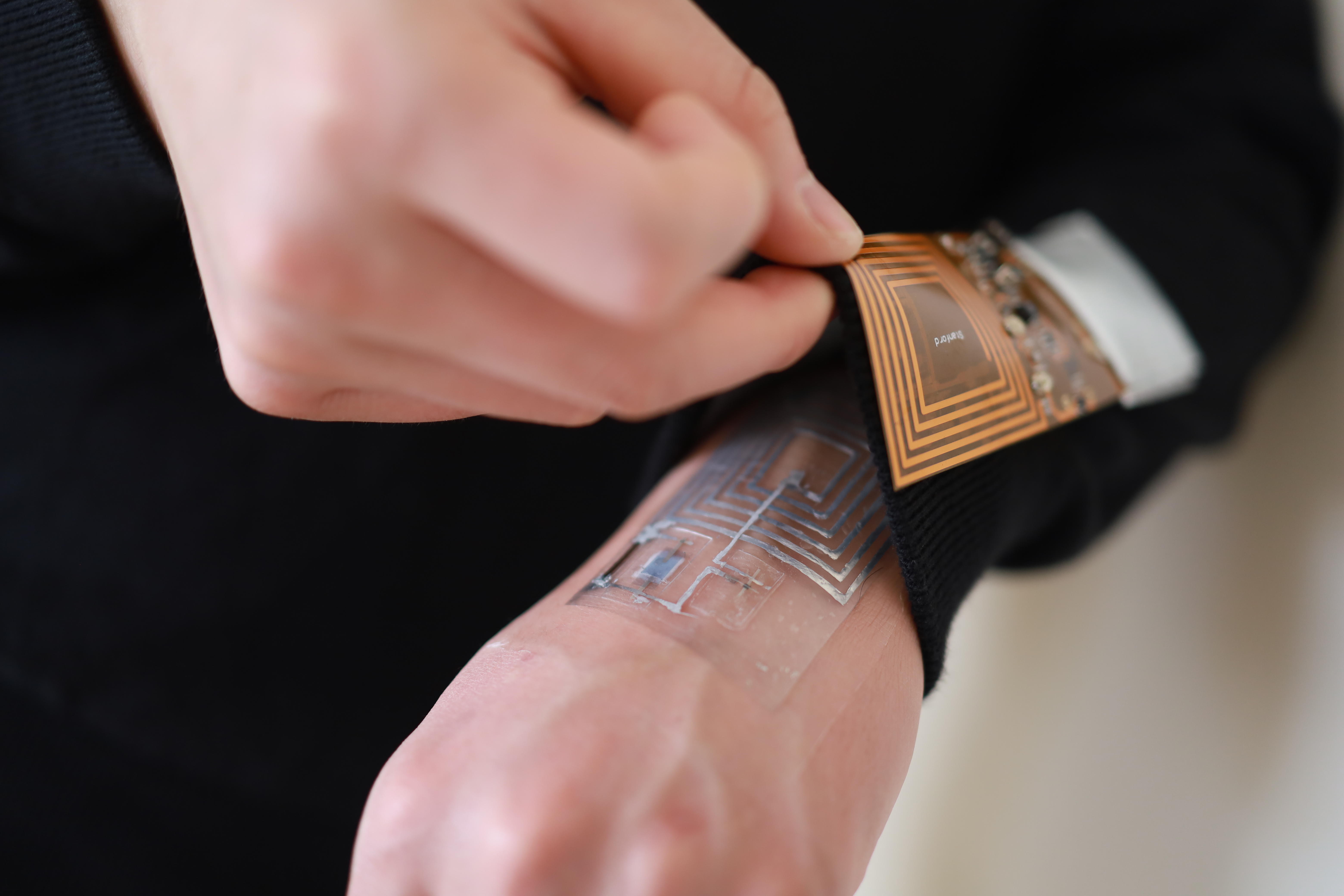High-frequency and intrinsically stretchable polymer diodes

Title: High-frequency and intrinsically stretchable polymer diodes
Authors: Naoji Matsuhisa, Simiao Niu, Stephen J. K. O'Neill, Jiheong Kang, Yuto Ochiai, Toru Katsumata, Hung-Chin Wu, Minoru Ashizawa, Ging-Ji Nathan Wang, Donglai Zhong, Xuelin Wang, Xiwen Gong, Rui Ning, Huaxin Gong, Insang You, Yu Zheng, Zhitao Zhang, Jeffrey B.-H. Tok, Xiaodong Chen & Zhenan Bao
Journal: Nature, Vol 600, Issue 7888, Page 246-252 (2021)
DOI: 10.1038/s41586-021-04053-6
Abstract:
Skin-like intrinsically stretchable soft electronic devices are essential to realize next-generation remote and preventative medicine for advanced personal healthcare1-4. The recent development of intrinsically stretchable conductors and semiconductors has enabled highly mechanically robust and skin-conformable electronic circuits or optoelectronic devices2,5-10. However, their operating frequencies have been limited to less than 100 hertz, which is much lower than that required for many applications. Here we report intrinsically stretchable diodes-based on stretchable organic and nanomaterials-capable of operating at a frequency as high as 13.56 megahertz. This operating frequency is high enough for the wireless operation of soft sensors and electrochromic display pixels using radiofrequency identification in which the base-carrier frequency is 6.78 megahertz or 13.56 megahertz. This was achieved through a combination of rational material design and device engineering. Specifically, we developed a stretchable anode, cathode, semiconductor and current collector that can satisfy the strict requirements for high-frequency operation. Finally, we show the operational feasibility of our diode by integrating it with a stretchable sensor, electrochromic display pixel and antenna to realize a stretchable wireless tag. This work is an important step towards enabling enhanced functionalities and capabilities for skin-like wearable electronics.
References
- Sim, K. et al. An epicardial bioelectronic patch made from soft rubbery materials and capable of spatiotemporal mapping of electrophysiological activity. Nat. Electron. 3, 775-784 (2020).
- Wang, S. et al. Skin electronics from scalable fabrication of an intrinsically stretchable transistor array. Nature 555, 83-88 (2018).
- Miyamoto, A. et al. Inflammation-free, gas-permeable, lightweight, stretchable on-skin electronics with nanomeshes. Nat. Nanotechnol. 12, 907-913 (2017).
- Kim, D.-H. et al. Epidermal electronics. Science 333, 838-843 (2011).
- Zheng, Y. et al. Monolithic optical microlithography of high-density elastic circuits. Science 373, 88-94 (2021).
- Liang, J., Li, L., Niu, X., Yu, Z. & Pei, Q. Elastomeric polymer light-emitting devices and displays. Nat. Photon. 7, 817-824 (2013).
- Kim, H., Sim, K., Thukral, A. & Yu, C. Rubbery electronics and sensors from intrinsically stretchable elastomeric composites of semiconductors and conductors. Sci. Adv. 3, e1701114 (2017).
- Kim, J.-H. & Park, J.-W. Intrinsically stretchable organic light-emitting diodes. Sci. Adv.7, eabd9715 (2021).
- Wang, Z. et al. Intrinsically stretchable organic solar cells beyond 10% power conversion efficiency enabled by transfer printing method. Adv. Funct. Mater. 31, 2103534 (2021).
- Noh, J. et al. Intrinsically stretchable organic solar cells with efficiencies of over 11%. ACS Energy Lett. 6, 2512-2518 (2021).
Related Articles:
- A wireless body area sensor network based on stretchable passive tags. Nature Electronics, Vol. 2, Issue. 8, pp. 361-368 (2019). DOI: 10.1038/s41928-019-0286-2
- Skin electronics from scalable fabrication of an intrinsically stretchable transistor array. Nature, Vol. 555, Issue. 7694, pp. 83-88 (2018). DOI: 10.1038/nature25494
- Highly stretchable polymer semiconductor films through the nanoconfinement effect. Science, Vol. 355, Issue. 6320, pp. 59-64 (2017). DOI: 10.1126/science.aah4496





